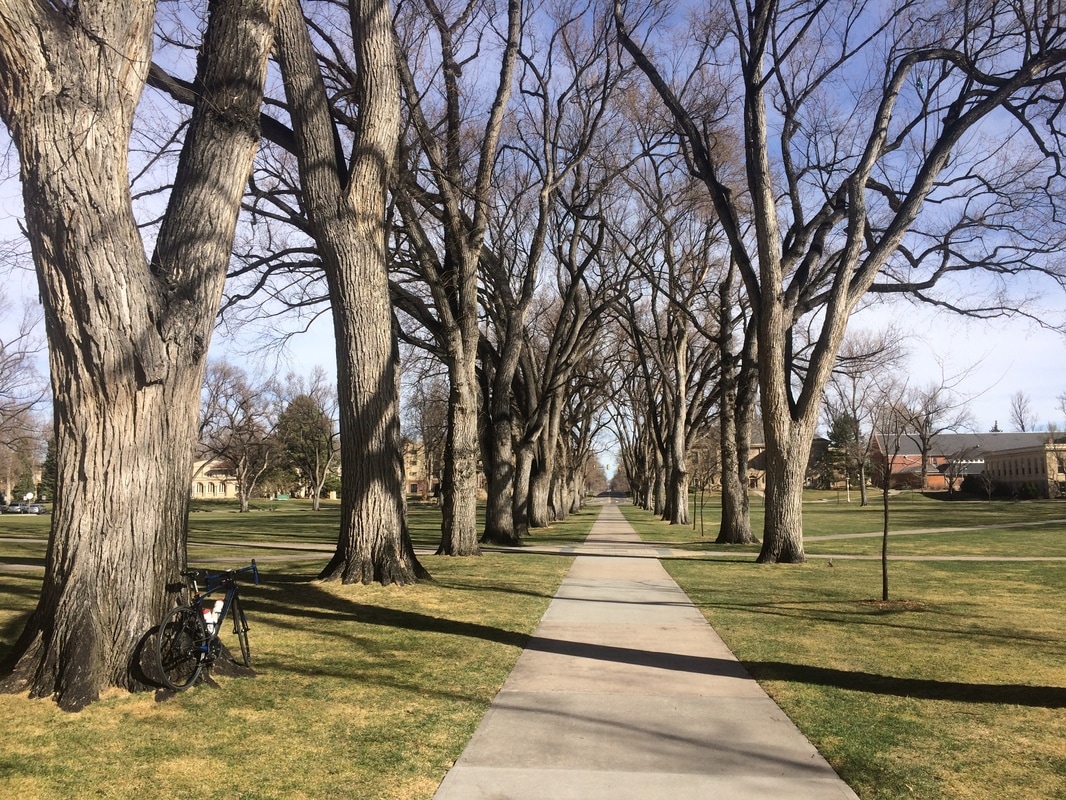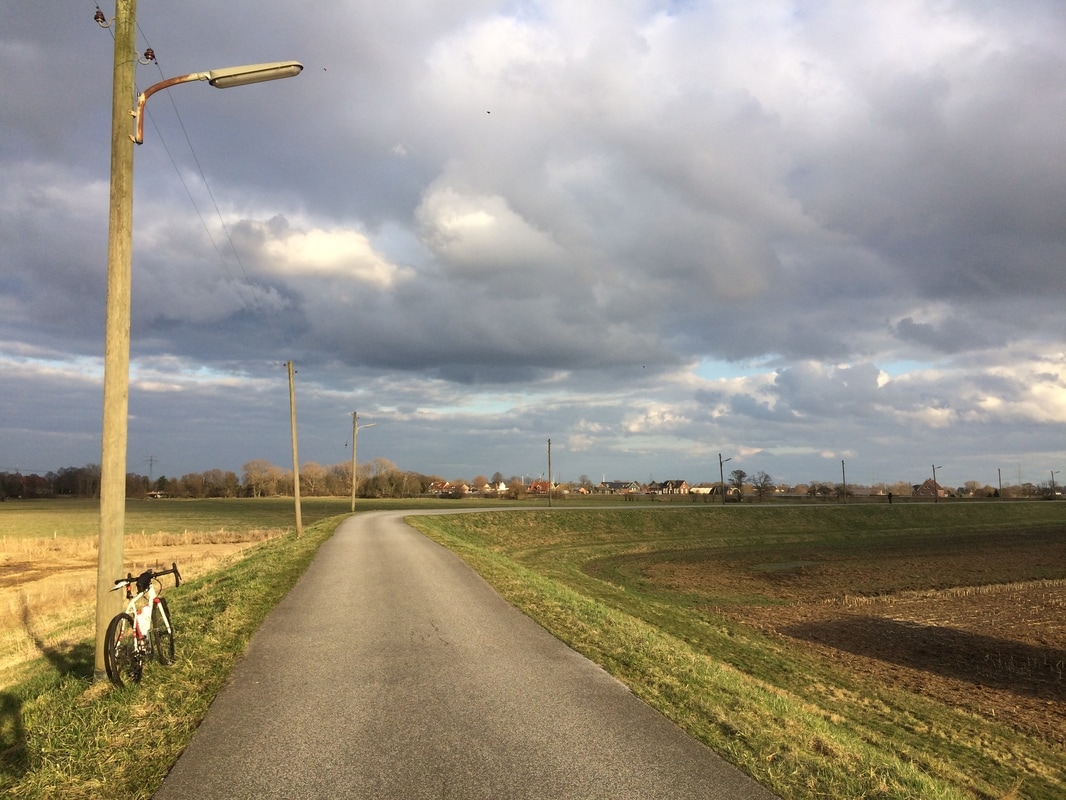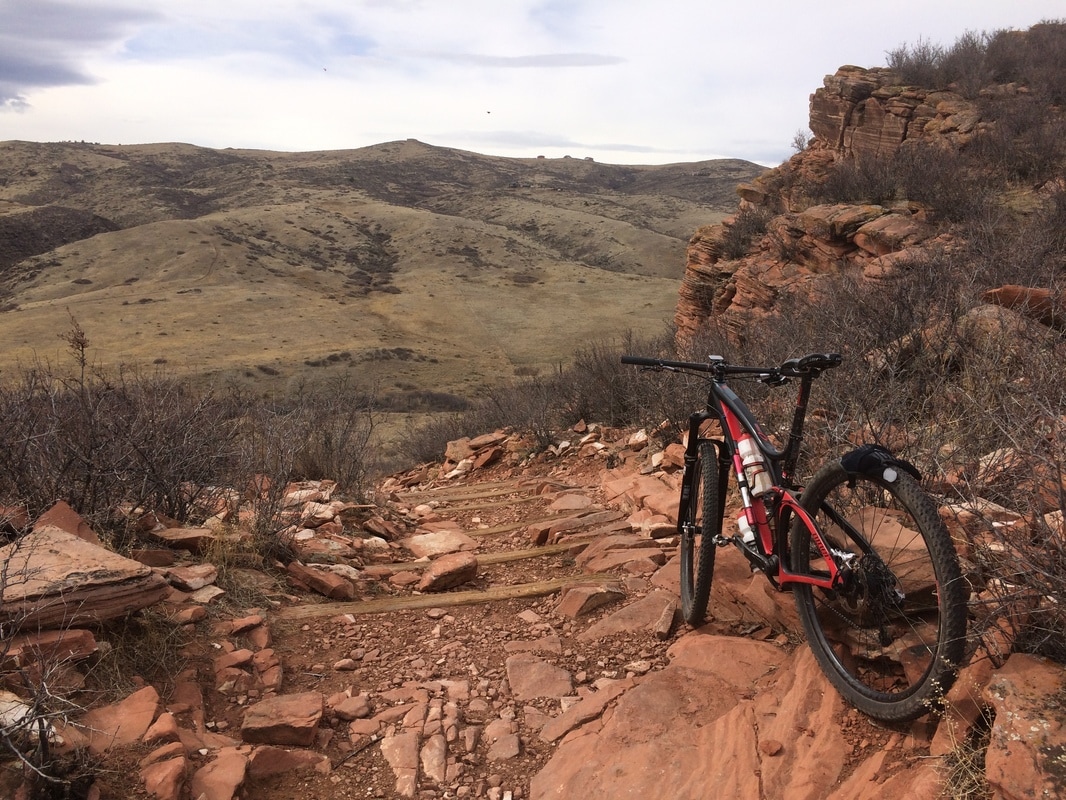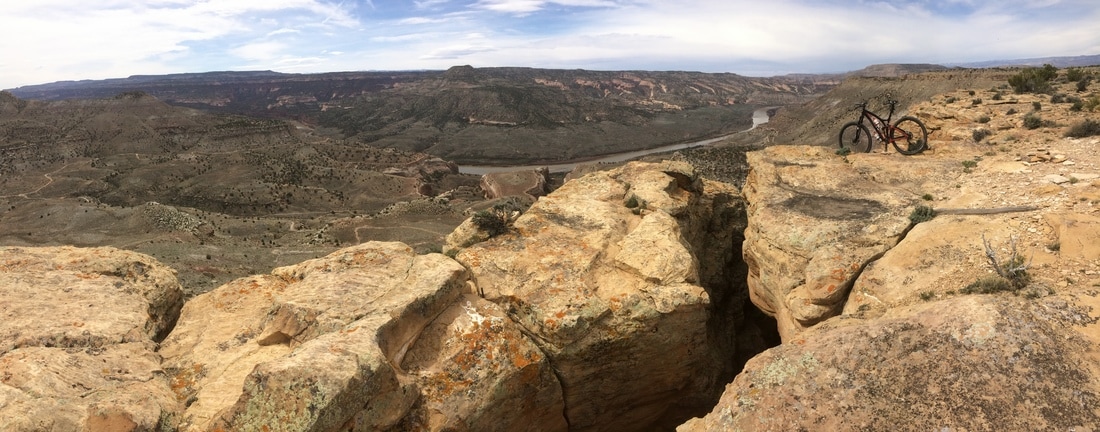|
In this blog-entry I recall my experiences since I started self-coaching after the 2016 Leadville Trail 100 (13 August). Details include post-race season tours through Europe and a successful 10,000 mile (16,000 km) distance goal, the second year in a row that I rode over 10,000 miles on a bike. By December 2016, I was adapting to a gym plan that would, in hindsight, lead to significant power improvement on the bike when I re-saddled-up on 4 February, 2017, the day after I arrived to Mallorca for a European-style month of "spring" training. This entry wraps-up with a summary of training from February through April. In my next blog, I'll talk about changes I made to my primary race bike just before the season began in 2017 and begin what I'll complete in a subsequent blog, to lay-out the details of nutritional mistakes and the effects that those had on my performances at the FoCo 102 (6 June) and 12-hrs of Mesa Verde (13 June).  For the first time since I called pro-roadie Alex Hagman in March 2013 and asked him if he'd coach me through my goals to qualify-for and subsequently compete in the Leadville Trail 100 mountain bike race, the beginning of my non-recreational (training and racing) cycling history, I set-out in the fall and winter of 2016-17 to self-coach in the gym and on the bike, Backing-up from present to that first call to Alex, Alex coached me in 2013, 2014, and 2016. In between, 2015, I was coached by a Northern Colorado Grassroots teammate, Pat Nash. This season I've received valuable advice from Clint Knapp, a former top national and world pro mountain and trials bike athlete. Following the 2016 Leadville Trail 100, I let me my race fitness decline, as I have in the past about this time, and instead focused on riding with friends before I made the "cat jump" back to Hamburg on 13 September. Upon arriving in Hamburg, I settled-in and enjoyed some local, chill, rides. Nearly three weeks slipped passed and then I was departing (5 October) for a journey that unfolded one day at a time until day 16 when I returned to Hamburg on my Niner Bikes RLT 9 Steel gravel grinder. It took me weeks to transfer that story from images and my mind to the digital interface of my blog. However, that effort behind me now, visitors can explore each day of my trip by clicking on links to each day on my home page. But note, in the future I'll remove those links (replace them with others) and users will instead need to click on October 2016 under Archives (top-right on this page) and then scroll through each daily blog entry, look for Europe Tour | Autumn 2016, each day includes many photographs. Upon arriving back to the Bismarckstrassa in Hamburg on 20 October, I took some time to recover from 1600 miles (2575 km) of cycling in 16 days through seven countries. But then I was back on the bikes that I'd flown over with from the US, Giant TCR Composite 1.0 and the RLT, to conclude the last few hundred miles of my 10,000 mile (16,000 km) cycling goal. Unfortunately for my fingers in particular, I delayed my decision to complete the 10,000 mile goal for a couple of weeks. Then finally, on 22 November, well into the onset of winter in Hamburg, I awoke from my slumber and attacked the remaining 622 miles (1001 km). On a very cold day, 29 November, with snow on both road shoulders and often ice between mixed with wet leaves, I completed my fourth and final hundo distance ride (160+ km) in seven days to complete my goal and just in time given weather predictions at that time. It's always a relief, and deeply satisfying of course, to complete a difficult goal, such as cycling 10,000 miles (16,000 km) in a year (second year running), and my experience as the sun set on November 29th was no different. Nonetheless, I can't imagine what the same conclusion would have felt like when British cyclist Tommy Godwin completed his epic cycling year in 1940 in the midst of WWII. Tommy cycled over 75,000 miles from January 1939 to January 1940 and then went on, without a break, to set another World record, 100,000 miles on a bike in 500 days. After completing the latter record, which he still holds, Tommy "... dismounted [his bike] and spent weeks learning how to walk [again] before going to war in the RAF". You can read more about Tommy's accomplishments here and at Wikipedia. Returning to what can only be regarded as a relatively modest accomplishment (10,000 miles in a year) compared to Tommy and other cycling legends, after I completed my last hundo I initiated the first phase of my self-coaching experiment: (1) I hung up my bikes (for two months); and (2), initiated a structured, four times per week, weight training regimen in Kaifu Lodge, a well-equipped, diverse, training and recreational sport facility about five minutes walk from my home in Hamburg. I allowed myself a period of burn-in, a concept that I'm borrowing from another period in my life when I found myself deep down the rabbit hole of Statistics, whereby I allowed my body to undergo the physiological and structural changes that would be beneficial when I upped the weight and intensity for four weeks in January. I also traveled during the first two weeks of December, nonetheless I managed to lay the foundation of what would be my weight training work-out plan for the next eight weeks. By January, I was routinely making my way to the gym, often seven days a week. On the off-weight days I stretched and relaxed in the various saunas offered at Kaifu. During this time, I also returned to running, mostly on the treadmill. As part of this component of my athletic training, I set a goal to run a 5k in under 19 minutes 30 seconds. I accomplished that goal on 22 January and subsequently, on January 26th, set a personal record for a 5k distance on the treadmill of 19 minutes 4 seconds. The day before I ran the same distance on the treadmill in 19 minutes 6 seconds. My ambition was to repeat the sub-19:30 goal outside but weather and other factors derailed my good intentions. No doubt I'll suffer again into the sub-20 realm in the winter of 2017-18 and perhaps find the window that I need to repeat the sub-19:30 goal outside. Or perhaps I'll up-the-prize and embark on a plan that will bring me to sub-19. Stay tuned! Back to the gym and January, to the right is a seven-day block of training to give readers an idea of what my 'structured' training looked like as far as daily and weekly doses. Within those doses, I was increasing weight frequently, and gradually. My foci were legs, upper body, and core, enough to keep me in the gym, with running, each day for about 2-3 hours. And as a rule, in addition to weights and running, I typically finished with stretching followed by relaxation in one or more saunas after each workout. I'll highlight just one of those stretches, captured in an image below (scroll down). That stretch demonstrates my commitment to stretching my quads, in part to reduce the tendency for my back to sway with uncomfortable implications (low back pain). It took me weeks of gradual stretching to go as deep as the position I'm holding (all the way to the floor) in that image. Prior to going deep into this particular stretch, all of the cycling hours and miles I was inflicting on my body were resulting in reliable back pain even after short walks. Now that I'm stretching my quads regularly, during the cycling season as well, back pain almost never arises and when it does it's far less uncomfortable than it had been in the past. My two month block of weight lifting, intensive stretching, and incrementally increasing my 5k pace were all very successful as far as contributions that each made to my physical and mental strength, health, and wellness. Inspired by those successes, I'm now looking and thinking about an even better plan, especially the weight lifting component, to implement during the 2017-18 winter break from cycling. At the moment, 28 June 2017, I'm in discussion with Clint Knapp, my primary adviser in 2017, and I anticipate that I'll fully-integrate his 18 week gym plan starting in October. Given my success after just two months, I'm guessing, anticipating, that Clint's plan will deliver very exciting results when I return to racing in 2018. At the conclusion of January, 2017, as I was wrapping-up training in the gym, I was already preparing my Giant TCR Comp 1 road bike for a short flight to Mallorca, Spain, an island east of mainland Spain about 320 kilometers as the hoopee fly's. For all of the details from February, a month of cycle training in Mallorca, head-over to this blog entry or scroll down this page. For what remains of this entry, I want to briefly describe my self-coaching dosages and structure during the months of March and April. My objectives in Mallorca were to reboot my cycling body, with the new strength I'd added to my legs over December and January, and quickly build-up my endurance engine. Both objectives went well, I often felt good on the bike and my power had clearly improved following my commitment to the weight room. By the way, I feel fortunate to have a Quarq Riken R Power Meter bolted to my Giant road bike, and I'm grateful to a friend, Bill Lutes, for gifting me this unit a few years ago. Since then Quarq has warrantied the device twice, so I presently have the state-of-the-art Riken because of Quarq's exceptional customer service policies and Bill's initial generosity. If you're considering a power meter then I'd look no farther than Quarq. In my view, customer service and quality offered by Quarq is the very best in the industry. I continued to build my endurance base through March and April. After riding 1187 miles (1910 km) with 65,726 feet (20,033 meters) of climbing in February (all in Mallorca), I added 1232 + 1113 miles and 56,053 + 64,824 feet in March and April, respectively. By late March, I was also integrating threshold efforts and shorter efforts intended to exercise and develop my anaerobic zone. My strategy for these efforts was then and continues to be, basically, to ride hard, as if racing, for 2-3 hours and during those efforts to push into my anaerobic zone on short climbs sporadically over the course of the whole ride. As this implies, March and February (and up to present) contained very few structured intervals, so few that they are not worth mentioning here. Yet despite a lack of structure, I came into May, my first month of racing, feeling strong with the numbers to back that up on the Performance Management Chart (PMC) provided with a subscription to Training Peaks. Similar to how I've been researching better ways to weight train in the 2017-18 winter period, I'm also asking questions and narrowing down a better way to interval train in 2018. Although I made obvious gains in performance with my unstructured method and certainly had some fun keeping it unstructured, there is no doubt that what I've struggled with the most this season was the cost of (unintentionally) dropping structured intervals. I'll pick-up with those details, and many more from my experience racing and training in May and June, in my next blog entry. In the meantime, ride on ... and perhaps I'll see you at Wednesday Night World Championships this evening? |
�
André BretonAdventure Guide, Mentor, Lifestyle Coach, Consultant, Endurance Athlete Categories
All
Archives
March 2021
|
Quick Links |
© COPYRIGHT 2021. ALL RIGHTS RESERVED.
|












 RSS Feed
RSS Feed